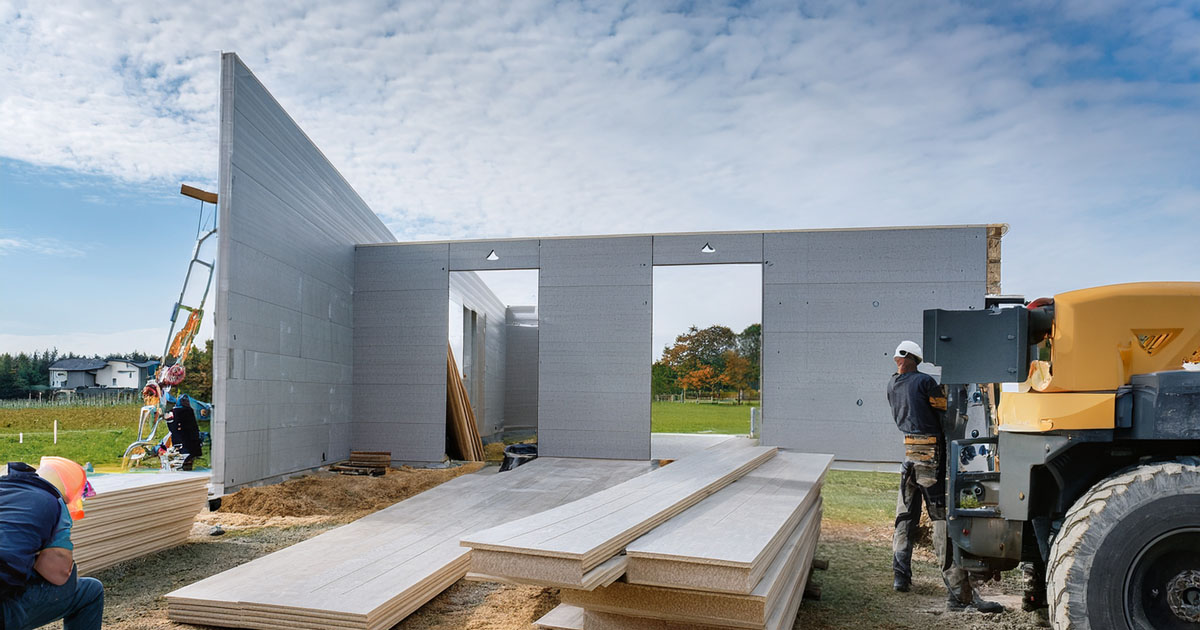Why Rising Energy Costs Make Smarter Housing a No-Brainer
What a recent Ezra Klein episode reveals about cost, permitting, and how to rebuild faster On a recent episode of The Ezra Klein Show, climate...
3 min read
 Tim Sweeney
:
Apr 3, 2025 6:57:37 AM
Tim Sweeney
:
Apr 3, 2025 6:57:37 AM

The way we design and construct buildings today will shape the future of our planet. With rising energy costs and growing concerns about carbon emissions, architects and builders face a crucial challenge: How do we create high-performance buildings without driving up costs?
The good news? Achieving superior energy efficiency while keeping budgets in check is not just possible—it’s practical. By following these three simple steps, you can design buildings that are smarter, more sustainable, and more cost-effective than ever before.
Think of the building envelope as the first and most important layer of defense against energy waste. The goal is simple: maximize insulation, airtightness, and durability so that the building requires less energy to heat and cool in the first place.
The Bottom Line: A well-designed envelope drastically reduces heating and cooling needs, making the entire building more efficient from the start.
One of the biggest (and most expensive) mistakes in building design is oversizing HVAC systems. Bigger isn’t better—it’s wasteful. Once the building envelope is optimized, the mechanical system can be downsized, saving money while improving comfort and efficiency.
The Bottom Line: A right-sized HVAC system costs 20–50% less than an oversized one and reduces lifetime operational costs significantly.
With a highly efficient envelope and an optimized mechanical system, the final step is to choose the right energy solutions—ones that offer the best return on investment.
The Bottom Line: A high-performance building uses 50–90% less operational energy, drastically reducing both carbon emissions and long-term expenses.
Better Envelope + Right Building System → Smaller HVAC → Smarter Tech = Maximized Efficiency & Lowest Cost
By following these three steps, architects and builders can dramatically reduce energy consumption, lower operating costs, and create future-proof buildings—without increasing upfront costs.
Passive House Design is one of the most effective ways to cut energy use by up to 90%, thanks to its airtight construction, superior insulation, and thermal bridge-free design. However, other frameworks like Net-Zero Energy, LEED, and WELL offer different advantages depending on budget, climate, and project goals. While Passive House principles can be integrated into any project, a holistic approach should evaluate cost, feasibility, and energy impact.
The Simplus Building System is a game-changer for reducing both embodied and operational CO₂ emissions—while delivering exceptional value for the money. Unlike traditional methods, Simplus uses highly efficient prefabricated components, cutting down on material waste, labor costs, and construction time. Compared to SIPs and ICFs, Simplus provides superior flexibility, better thermal performance, and lower embodied carbon—making it one of the most effective solutions for achieving net-zero or ultra-low-energy buildings at a competitive cost.
Energy-efficient buildings aren’t just the future—they’re the smartest investment today. By applying these three simple steps, you can design buildings that cost less, perform better, and help combat climate change. The choice is clear: Build smarter, not more expensive.
Want to learn how to apply these strategies to your next project? Contact Simplus Systems today to get started.

What a recent Ezra Klein episode reveals about cost, permitting, and how to rebuild faster On a recent episode of The Ezra Klein Show, climate...

Wildfires don’t just destroy homes—they upend entire communities. From Paradise to Lahaina to Los Angeles, fire survivors face years of delays, red...

When a wildfire hits, most people worry about flames. But smoke is often both the immediate killer and the more pervasive, long-lasting...